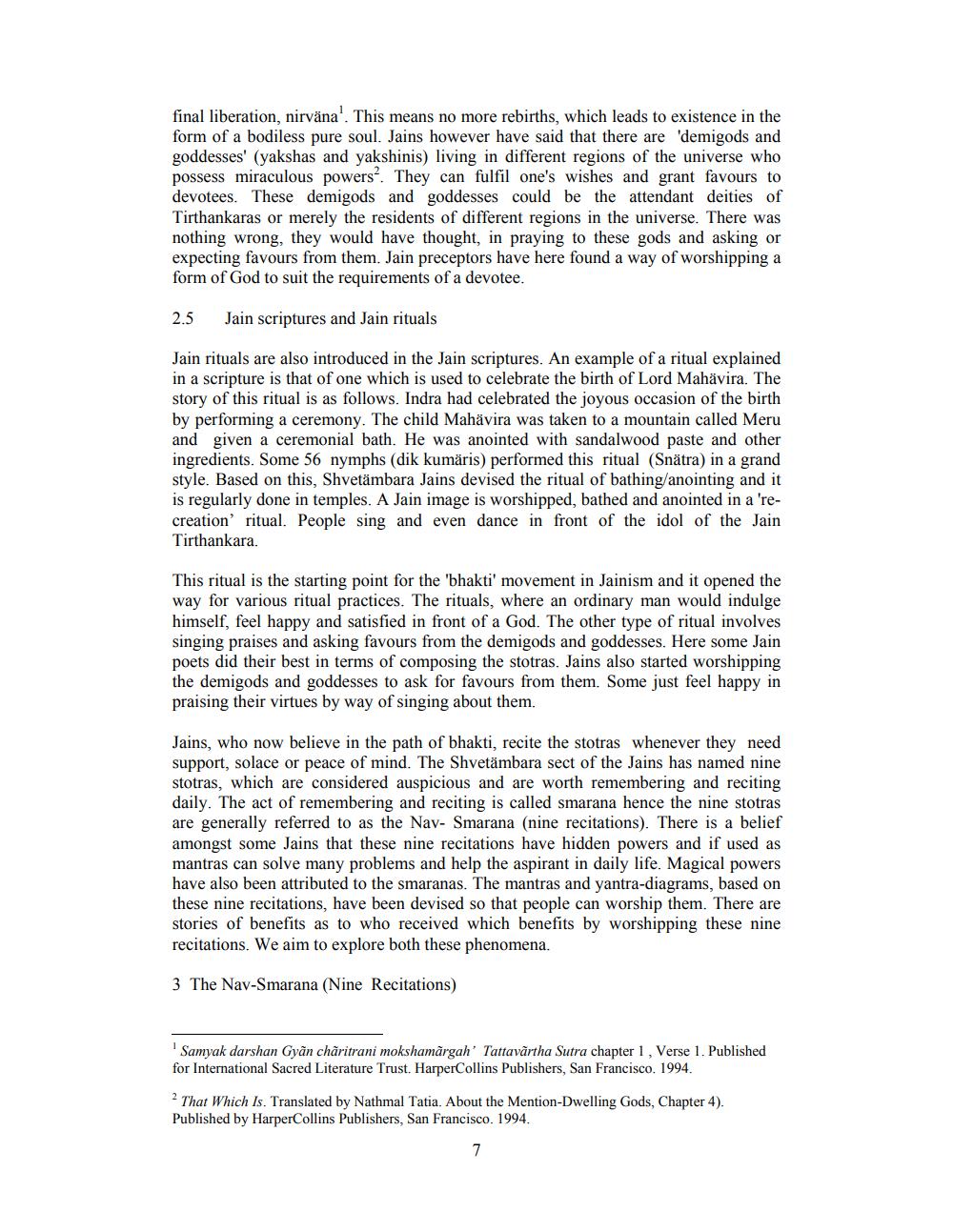Book Title: Nav Smarana Author(s): Vinod Kapashi Publisher: Vinod Kapashi View full book textPage 7
________________ final liberation, nirväna'. This means no more rebirths, which leads to existence in the form of a bodiless pure soul. Jains however have said that there are 'demigods and goddesses' (yakshas and yakshinis) living in different regions of the universe who possess miraculous powers. They can fulfil one's wishes and grant favours to devotees. These demigods and goddesses could be the attendant deities of Tirthankaras or merely the residents of different regions in the universe. There was nothing wrong, they would have thought, in praying to these gods and asking or expecting favours from them. Jain preceptors have here found a way of worshipping a form of God to suit the requirements of a devotee. 2.5 Jain scriptures and Jain rituals Jain rituals are also introduced in the Jain scriptures. An example of a ritual explained in a scripture is that of one which is used to celebrate the birth of Lord Mahävira. The story of this ritual is as follows. Indra had celebrated the joyous occasion of the birth by performing a ceremony. The child Mahävira was taken to a mountain called Meru and given a ceremonial bath. He was anointed with sandalwood paste and other ingredients. Some 56 nymphs (dik kumäris) performed this ritual (Snätra) in a grand style. Based on this, Shvetämbara Jains devised the ritual of bathing/anointing and it is regularly done in temples. A Jain image is worshipped, bathed and anointed in a 'recreation ritual. People sing and even dance in front of the idol of the Jain Tirthankara. This ritual is the starting point for the 'bhakti' movement in Jainism and it opened the way for various ritual practices. The rituals, where an ordinary man would indulge himself, feel happy and satisfied in front of a God. The other type of ritual involves singing praises and asking favours from the demigods and goddesses. Here some Jain poets did their best in terms of composing the stotras. Jains also started worshipping the demigods and goddesses to ask for favours from them. Some just feel happy in praising their virtues by way of singing about them. Jains, who now believe in the path of bhakti, recite the stotras whenever they need support, solace or peace of mind. The Shvetämbara sect of the Jains has named nine stotras, which are considered auspicious and are worth remembering and reciting daily. The act of remembering and reciting is called smarana hence the nine stotras are generally referred to as the Nav- Smarana (nine recitations). There is a belief amongst some Jains that these nine recitations have hidden powers and if used as mantras can solve many problems and help the aspirant in daily life. Magical powers have also been attributed to the smaranas. The mantras and yantra-diagrams, based on these nine recitations, have been devised so that people can worship them. There are stories of benefits as to who received which benefits by worshipping these nine recitations. We aim to explore both these phenomena. 3 The Nav-Smarana (Nine Recitations) Samyak darshan Gyàn chăritrani mokshamàrgah' Tattavārtha Sutra chapter 1, Verse 1. Published for International Sacred Literature Trust, HarperCollins Publishers, San Francisco. 1994. ? That Which Is. Translated by Nathmal Tatia. About the Mention-Dwelling Gods, Chapter 4). Published by HarperCollins Publishers, San Francisco. 1994.Page Navigation
1 ... 5 6 7 8 9 10 11 12 13 14 15 16 17 18 19 20 21 22 23 24 25 26 27 28 29 30 31 32 33 34 35 36 37 38 39 40 41 42 43 44 45 46 47 48 49 50 51 52 53 54 55 56 57 58 59 60 61 62 63 64 65 66 67 68 69 70 71 72 ... 224
